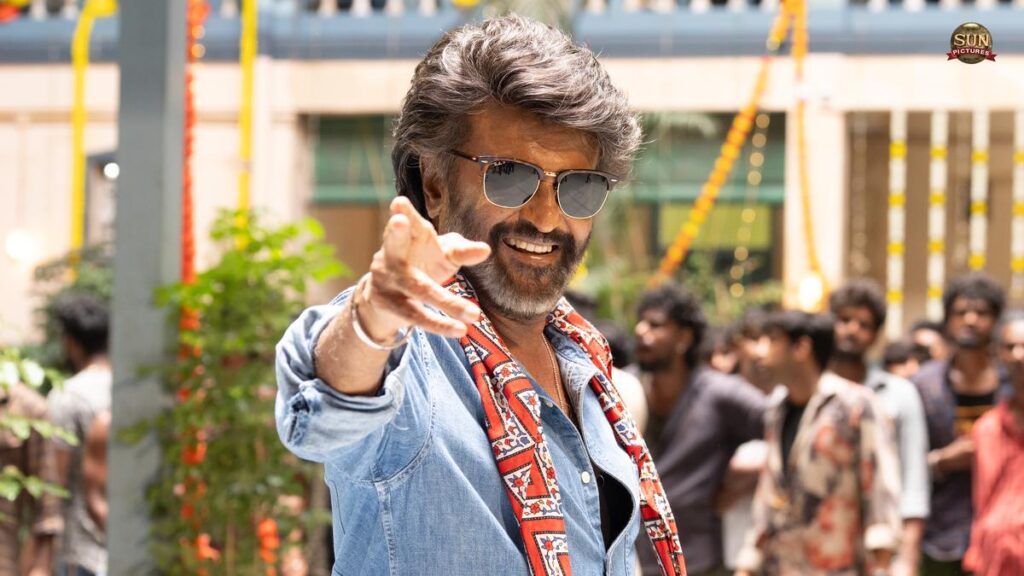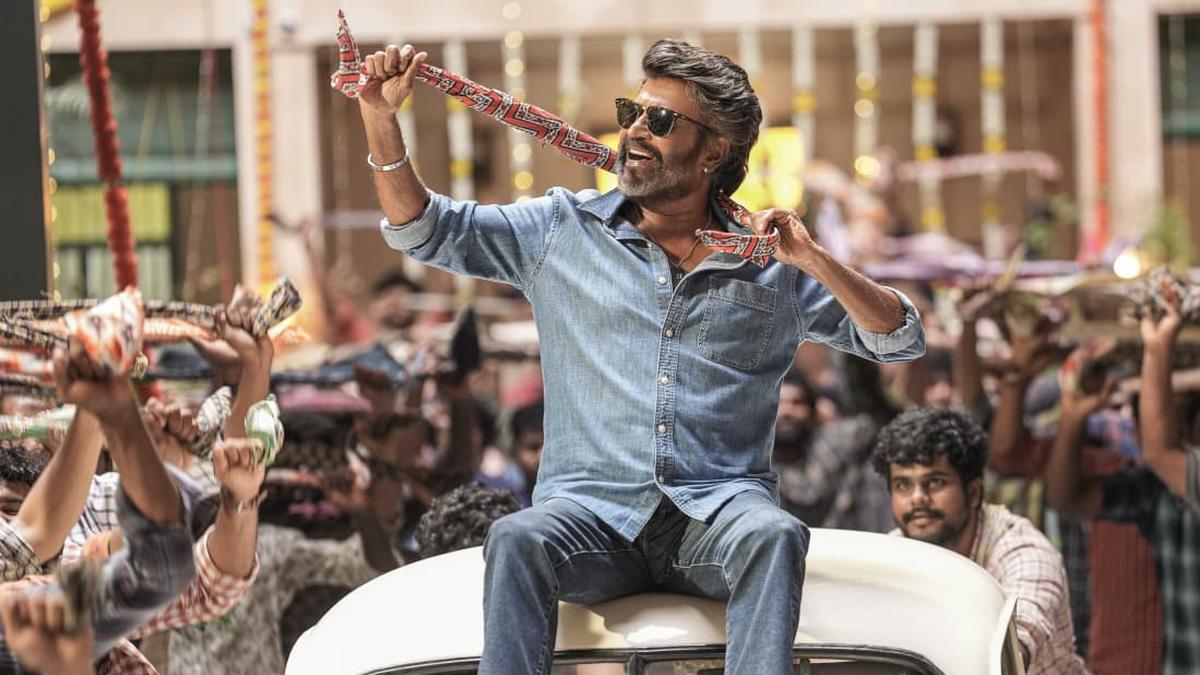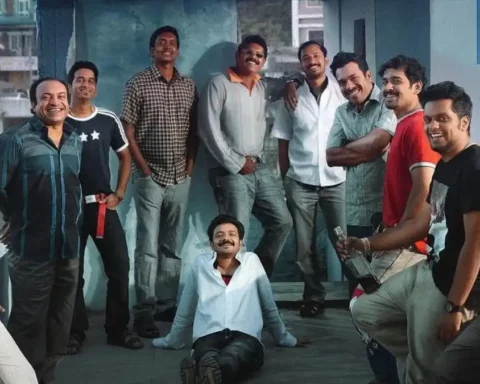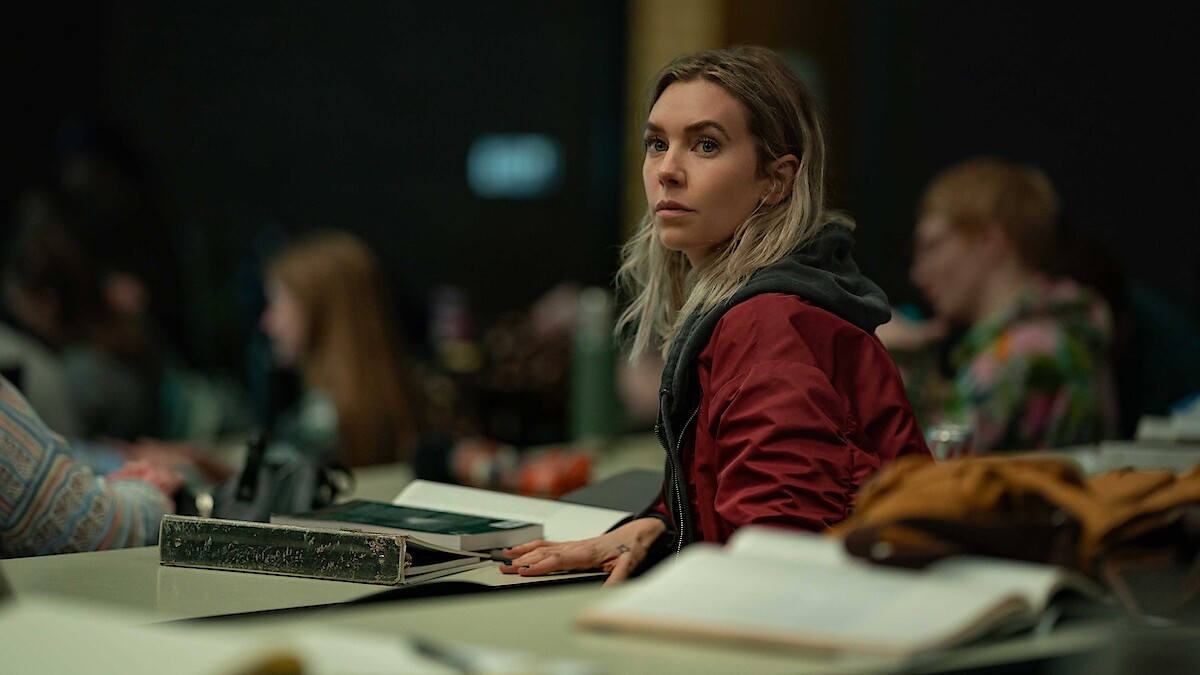In less than a decade, Lokesh Kanagaraj has established himself as a filmmaker with a distinct voice in the action genre. His style blends visual storytelling, twist-laden screenplays, and a flair for designing memorable set-pieces. Coolie largely lives up to that reputation, while also standing as the latest in a series of Tamil films crafted as open tributes to Rajinikanth.
In Chennai, Deva (Rajinikanth) manages a tightly run boarding house. News of his old friend Rajasekhar’s (Sathyaraj) unexpected demise draws him to the funeral, where he is met with hostility from Rajasekhar’s daughter, Preethi (Shruti Haasan). Soon after, a drunken outburst from Rajasekhar’s acquaintance hints at a troubling past, compelling Deva to dig deeper. Though the post-mortem cites natural causes leading to the death of Rajasekhar, Deva’s investigation points to blunt-force trauma. Earlier, Rajasekhar, struggling to make ends meet, had devised an electric chair meant for disposing of animal carcasses. When the project was rejected, he became vulnerable to Simon (Nagarjuna Akkineni), a smuggler who convinced him to repurpose the device for killing people and concealing crimes. Operating from the Visakhapatnam harbor, Simon ran a lucrative gold-watch trafficking racket with his aide Dayal (Soubin Shahir). When Dayal sets his sights on Preethi, Deva’s timely intervention sparks a chain of confrontations. Each one brings him closer to unravelling the truth behind friend’s murder.
From its opening moments, Coolie situates us in a bustling harbor, now a hub of illicit trade, which not only drives the present action but also carries a past linked to the protagonist. The narrative relies primarily on surprises and reversals to keep the story moving rather than adhering to a rigid plot progression. As Deva, Rajinikanth is projected once again in the mold of the savior. A combating figure willing to go to any extent to protect the family of his departed friend, even from the smallest harm. In the action sequences, he emerges almost invincible with punches that never miss their mark, blades cut precisely, and he walks away virtually unscathed. While Rajinikanth naturally commands the frame, Kanagaraj ensures that supporting characters are given arcs of their own, and they are far from being mere decorative presences. The antagonists, in particular, are sharply drawn. Their motives and unpredictability inject momentum into the plot, even when the film departs from a conventional narrative structure. Kanagaraj ensures that Simon and Dayal are rendered as genuinely menacing, their brutality and tactical cunning serving to heighten the stakes. In classical star-vehicle fashion, the strength of the villains exists not to overshadow the hero but to underline his supremacy, making Deva’s dominance appear all the more inevitable.

Kanagaraj makes a visible effort to strike a balance between fan-service and formal precision, yet Coolie ultimately succumbs to the gravitational pull of Rajinikanth’s star persona. Indian films built around a popular star who all but guarantees box-office returns often risk overwhelming directorial voice, and here the struggle is more acute. Kanagaraj’s orchestration of rhythm, tone, and visual emphasis shows craft, but the film’s set-pieces exist chiefly to amplify the superstar’s charisma. What might have functioned as structural anchors shaping character dynamics or shifting moral weight instead circle back to Rajinikanth’s screen presence. The result is both a celebration of his enduring magnetism and a reminder of the limits faced by even the most resourceful directors when working within the machinery of a star-led spectacle.
In terms of performance, Rajinikanth remains the emotional anchor of Coolie, with much of the film squarely resting on his shoulders. Yet his role offers little that departs from the familiar template of his past outings. The gestures, the pauses, the invincibility are all firmly in place. Soubin Shahir injects a distinctive wickedness into Dayal, portraying him as a brutal yet calculating manipulator. His energetic presence peaks in the dance number “Monica”, though the song itself feels awkwardly positioned within the narrative. Matching him in menace, Nagarjuna Akkineni’s Simon is rendered as a sadistic, power-drunk figure, a useful foil to Rajinikanth’s Deva. Shruti Haasan, however, is saddled with a weakly written role, reducing Preethi to a near-permanent damsel in distress, a portrayal that eventually becomes tiresome. In contrast, Rachita Ram as Kalyani is a wolf in sheep’s clothing, slipping with impressive ease into the gang of villains and lending the film an unexpected spark. Sathyaraj infuses weight to Rajasekar, while Upendra makes a brief but arresting presence as Kaleesha, designed more for frisson than development. The closing surprise is Aamir Khan’s appearance as Dahaa, an obvious echo of Suriya’s Rolex in Vikram (2022).
Girish Gangadharan’s cinematography is stylish, and fills the frame with striking compositions. Philomin Raj’s editing keeps the pace taut, ensuring the film rarely lingers longer than it should. Anirudh Ravichander’s music and background score form the spine of Coolie, driving both its emotional crescendos and its action rhythms. Satheesh Kumar’s production design stands out for its scale and texture, grounding the film with a sense of lived-in authenticity.
Kanagaraj’s craft is evident throughout Coolie, but the film ultimately flourishes on the enduring charisma of Rajinikanth. Together they create a crowd-pleasing collaboration that turns familiar tropes into a spectacle to be entertained, especially by his fans.





